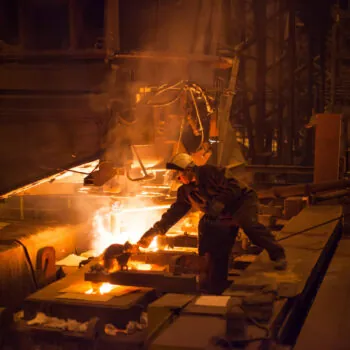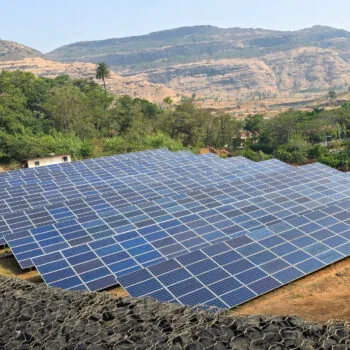The initiative to help overcome the investment gap in the EU by mobilising private financing for strategic investments is a good one. European Commission president Jean-Claude Juncker is aiming to get €315 billion flowing over three years, using the European Fund for Strategic Investments (EFSI).
Within that, we have seen a positive effort to build a sustainable Energy Union, but this needs to be scaled up. Investments which deliver high economic value and security for all EU citizens and businesses should be the sole focus. Latest figures show that since Juncker’s Investment Plan for Europe launched last year, €4 billion of the available funding (€21 billion) has been channelled into the energy sector, the single bigger receiver.
While renewables and energy efficiency projects enjoy the largest share of investment put forward (with 11 and six projects respectively), the EFSI did not go far enough to provide much needed funding for residential building efficiency and electricity networks (with one project put forward each). This is despite the transition towards a sustainable Energy Union requiring, by the Commission’s estimate, over €2 trillion by 2030 for electricity networks, energy efficiency and clean generation.
For building renovation and retrofitting alone, the Commission’s Energy Efficiency Financial Institutions Group estimates that €70 billion a year is needed by 2030. The building efficiency challenge is critical, given its huge saving potential and related security and economic benefits. What’s more, saving consumers money on their energy bills will encourage more spending back into the economy, helping with the Investment Plan’s goal to get Europe growing again. The European Parliament has recognised these benefits and recently called on the Commission to treat energy efficiency as an infrastructure priority, making it a primary consideration in future investment decisions.
The residential sector accounts for two thirds of final energy consumption in European buildings. Delivering the potential savings would cut gas imports by the equivalent of 80% of imports from Russia, saving between €1 and €2 trillion. By better integrating building efficiency with the electricity and gas systems, the EU could reduce the need for new gas infrastructure by 80%.
The EFSI should therefore not only scale up sustainable investment to fill the current gap but also stop financing high-carbon projects that deliver low public and private value, add unnecessary capacity and undermine Europe’s efforts to limit climate risk. Despite European gas demand peaking in 2010 and falling by 22% since, three gas projects have been approved. Similarly, seven high-carbon projects in the transport sector have been approved despite passenger transport demand peaking in 2009 and remaining stable since. These high-carbon investments show a financial leverage 40% lower than low carbon investments (x2.8 for transport vs. x6.8 for energy).
The geographical coverage of projects also reveals that the largest efficiency savings remain untapped. Member states with the highest potential for energy efficiency investment and the highest dependence on Russian gas imports have received none of the available investment in the energy sector so far. Central and Eastern European countries are therefore missing huge opportunities for high value growth and enhancing their energy security.
The energy and transport infrastructure investments made over the next few years will still be with us in 2050, by which time Europe’s economy will need to have shifted away from fossil fuels. The EFSI must bring new investment into Europe’s energy transition rather than pushing more funding into high carbon projects that could ultimately become stranded as the EU meets its climate and energy goals.
At a time when clean energy investment in Europe is falling, the US and China are scaling up their domestic and external projects. It is critical that the EU increase its efforts if we’re not to be left behind. Long-term investments are crucial for Europe’s security, growth and competitiveness.
Moving forward, the EFSI needs to select and prioritise projects that are:
Scalable: the investment should focus predominantly on projects which increase demand for growing markets rather than subsidising sectors in structural decline. The Investment Advisory Hub and the creation of Investment Platforms are critical for supporting regions and cities to bring forward scalable projects, especially in those Member States with less experience and capacity. They can provide stronger support for developing a financeable pipeline and aggregating multiple projects.
Productive: investment need to focus on projects with the highest leverage potential and the highest market growth opportunities moving forward. This will ensure the delivery of the high economic and security value to the EU economy. This is critical to strengthen Europe’s competitiveness and create new jobs.
Additional: the EFSI should prioritise investment in areas where underinvestment has occurred due to market failures or sub-optimal situations. More strongly applying the “additionality” principle means that EFSI should prioritise riskier, high value investment that would not otherwise be funded either under the EIB’s normal activity or through the private sector. Such market failures are well-documented in the low-carbon sector, including:
- Energy efficiency in buildings, where market failures include split incentives between owners and beneficiaries, and frequently a failure to internalise the full range of efficiency benefits;
- Electricity networks passing through more than one jurisdiction face higher regulatory barriers and transaction costs;
- Renewables projects, such as solar PV, face a wide range of financing costs according to market location due to uncertainties on support schemes and the regulatory environment;
- Innovative technologies, such as demand side management, face barriers to financing from risks related to demonstration, deployment, market demand and operational performance.
Climate-resilient: the Commission’s Joint Research Centre estimates that the costs from climate impacts on critical infrastructures (in the energy, transport and heavy industry sectors) could rise significantly in Europe: damages could triple by the 2020s, multiply six-fold by mid-century, and amount to more than 10 times present damages by the end of the century. Therefore all investment needs to be stress-tested against the projected climate risk. Unless infrastructure proposals include climate-resilience, incorporate the costs of adaptation and are economic throughout their lifetime, projects should not be granted access to EFSI.
This article first appeared in Climate Home.




